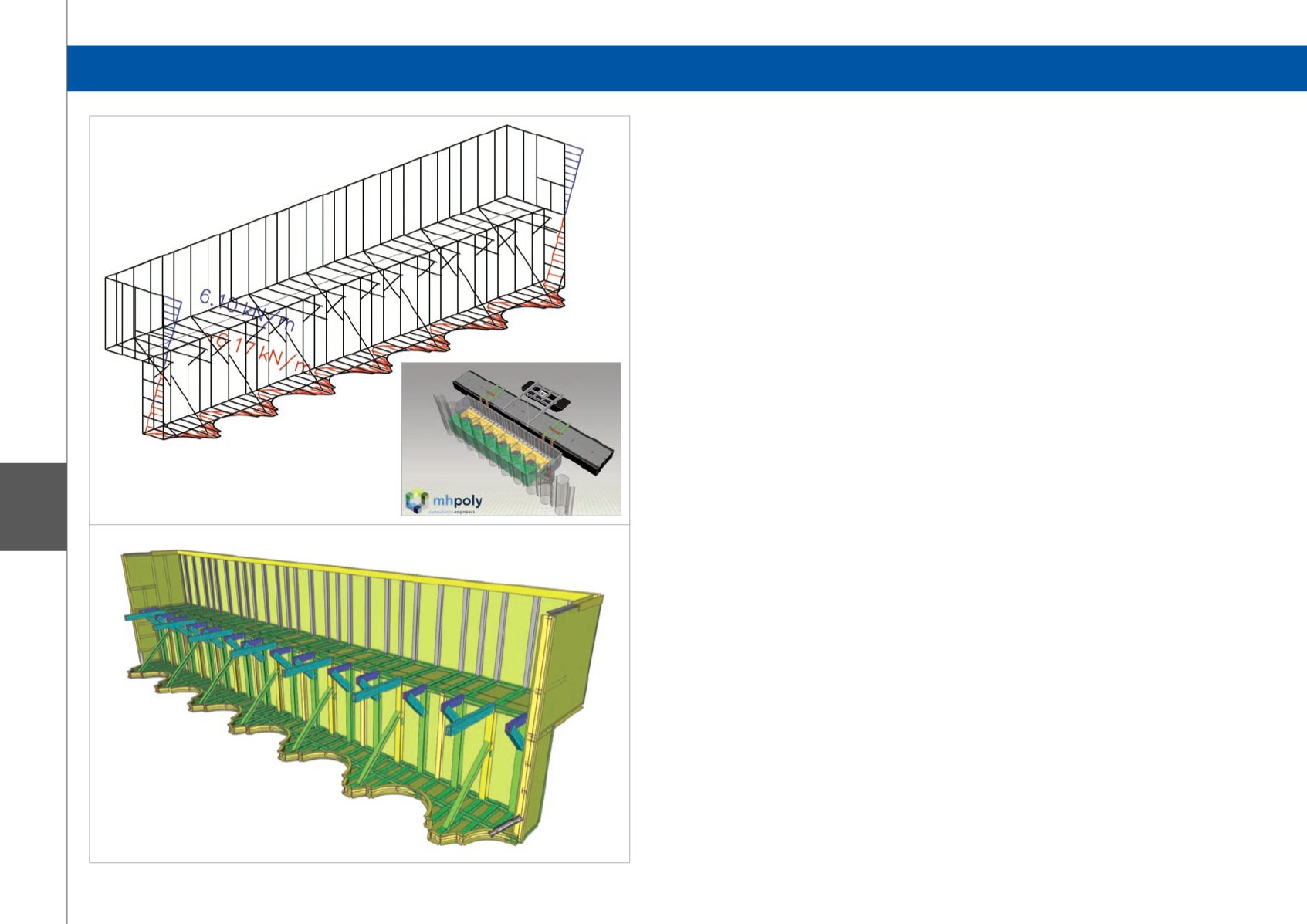
244
X4
Category 4: Special Projects
The capping beam system special technique for the
construction of quay wall capping beams
A recurrent problem in building quay walls in offshore
conditions is the construction of the concrete capping
beam. These capping beams usually reach below the
water surface and hence must be cast below the water
level. An unconventional shuttering technique is applied
in the construction of a quay wall in the Port of Antwerp.
The quay wall is situated alongside the Westquay of the
Canaldock B2. The design and engineering of the aqua-
shell is done by MH Poly Consultants & Engineers.
The construction is entrusted to Van Laere General
Contracting n.v.
Construction of the Quay Wall
The new quay wall has the length of approx. 860 m and
is built up from sections of 20.10 m each. Each section
consists of a combi-wall with 6 tubular piles, sheet
piles in between, and a capping beam 4.36 m wide
and 3.52 m high. This construction is then anchored by
means of 31 m-long MV-tension piles.
Some indicators for the construction:
• 267 steel tubular piles, diameter 2,032 mm, thickness
22 mm, length 26.8 m.
• 262 MV-piles HP360x174 (HISTAR 460), length
31 m.
• 268 double sheetpiles AZ26 (S355GP), length
20.8 m.
• 4,000 m
3
colloidal concrete and 18,000 m
3
reinforced
concrete.
• 1,500 tonnes rebar steel and 13,000 m
2
formwork.
During the tendering phase, the contractor was required
to submit a clear step-by-step plan including drawings
and descriptions, showing how he intended to build the
capping of the quay wall considering the preconditions,
such as the water. The quality of this plan also counted
for the final assessment of the tender subscriptions.
Van Laere n.v. was the only company tendering with
this exceptional technique based on a steel, watertight
limpet structure which is mounted on to the combi-wall
(front wall with tubular piles) and subsequently pumped
out completely.
Basics of the Aqua-Shell
After building the front wall and the tension piles,
a partial backfill up to the level of +3.40 (TAW) will
be carried out behind the combi-wall at shore side.
This level coincides with the bottom of the concrete
capping beam. A caisson (steel limpet construction) is
subsequently placed against the combi-wall alongside
the dock side. The particularity of this method is that the
concrete capping beam is cast from atop the water in
a watertight caisson that is mounted to the combi-wall.
Furthermore, this caisson can support the full weight of
the cast concrete and thus simultaneously serves as
bottom formwork. The concrete sections will be placed
in alternating order, skipping a section each time. Next,
using an adapted caisson, the remaining intermediate
sections are completed. In view of the tight time
schedule, two caissons will be made which can be used
simultaneously.
The Aqua-Shell will be shifted to the next section by
means of a single floating pontoon (catamaran type). An
ingenious forklift system holds the limpet construction
in the pontoon, which can thus float to the next position
and also ensures attachment of the caisson to the
combi-wall. After temporary attachment to the front wall,
large pumps lower the water level inside the caisson
as fast as possible, so that the rubber profiles around
it are compressed and ensure a safe and watertight
connection.
The design of the rubber profile was one of the
challenges during this project: The caisson had to be
watertight at all times considering a drive tolerance of
80 mm on the steel tubular piles.
The upward forces on the Aqua-Shell due to the water
pressure are passed on the quay wall by use of a
specially designed connection which can be re-used
during the project.
Aqua Shell - Antwerpen, Belgium
Software: Scia Engineer


